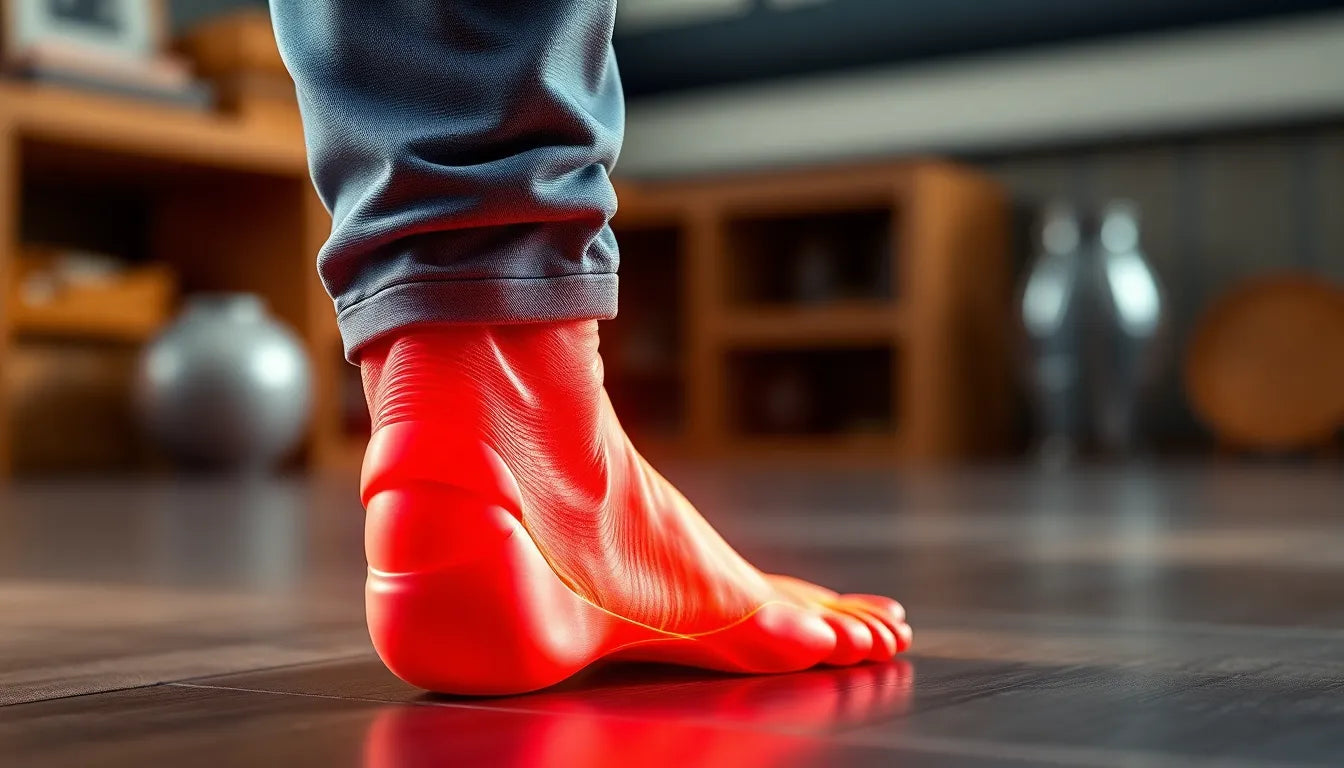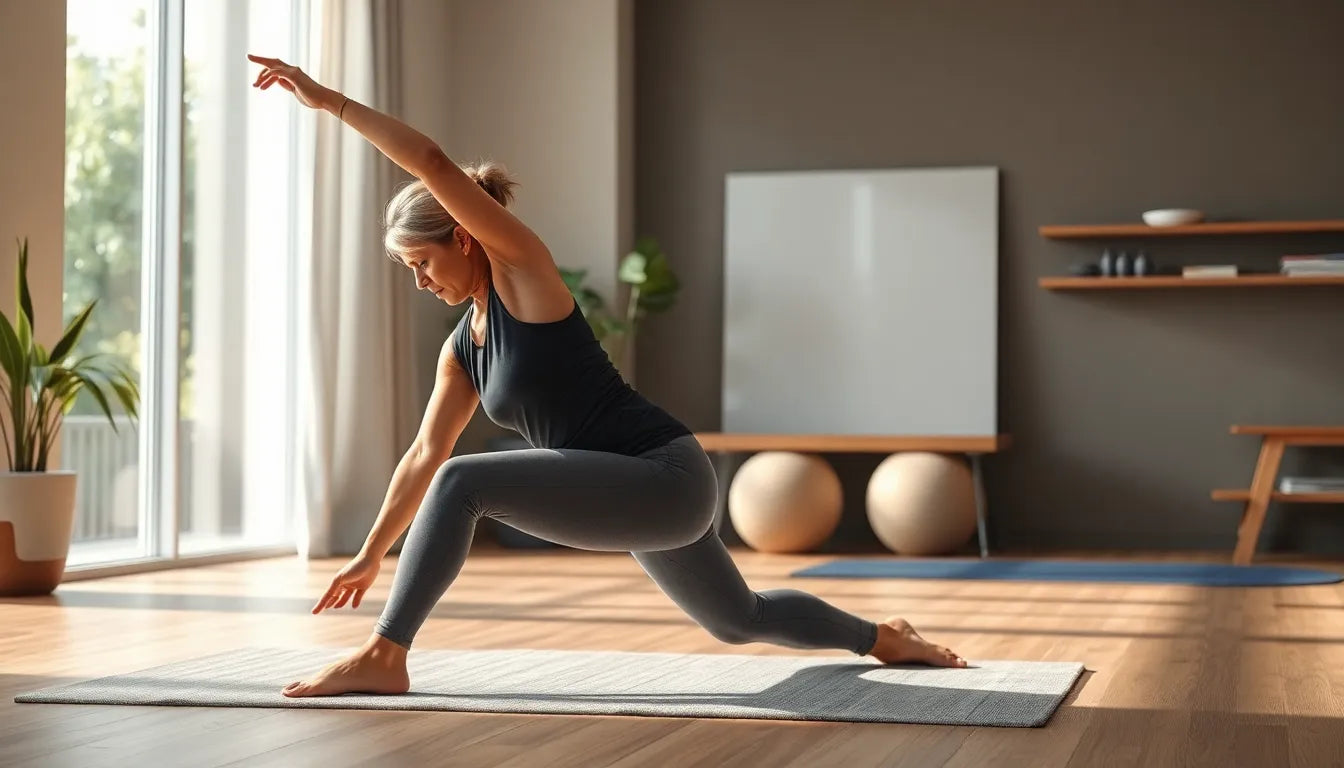Understanding the psoas muscle is essential for anyone aiming to improve their mobility and reduce discomfort in the lower back and hips. The psoas, a vital muscle located in the lower lumbar region of the spine, extends through the pelvis and attaches to the femur. It plays a key role in connecting the upper and lower body, facilitating movement, and maintaining posture. This muscle is crucial for activities such as walking, running, and bending, making its health and flexibility paramount for overall physical well-being.
Common issues with the psoas muscle
Despite its importance, the psoas muscle is often overlooked until it becomes a source of pain and discomfort. Common issues include tension, tightness, and pain, which can significantly impact mobility and quality of life. Several factors contribute to these problems, with prolonged sitting being one of the most prevalent. In today's sedentary lifestyle, many people spend hours sitting at desks, leading to a shortened and stiff psoas muscle. Additionally, lack of stretching and improper posture can exacerbate these issues, causing further strain on the muscle and surrounding areas.
The importance of stretching exercises
Incorporating specific stretching exercises into your routine can be highly effective in relieving psoas tension and improving flexibility. Stretching not only helps in maintaining the muscle's length and elasticity but also enhances overall mobility and posture. Regular stretching exercises can alleviate pain, reduce the risk of injury, and improve the functional movement of the body. By dedicating time to stretch the psoas muscle, you can unlock a range of benefits that contribute to a healthier, more active lifestyle.
Whether you're an athlete looking to enhance performance or someone seeking relief from daily discomfort, understanding and addressing the needs of your psoas muscle is crucial. By implementing targeted stretching exercises, you can effectively manage and prevent common psoas-related issues, leading to improved flexibility and comfort in your everyday activities.
Effective stretching exercises for psoas relief
To effectively manage tension and improve flexibility in the psoas muscle, incorporating targeted stretching exercises into your routine is essential. These exercises are designed to release tension, enhance mobility, and support overall physical well-being. Let's delve into some effective psoas stretches that can help you achieve these benefits.
Lunge stretch for psoas flexibility
The lunge stretch is a fundamental exercise that specifically targets the psoas muscle. It helps in releasing tension, improving flexibility, and enhancing posture. Here's how to perform this stretch:
- Begin by standing upright and stepping one foot forward into a lunge position.
- Lower your hips until both knees form a 90-degree angle.
- Ensure that your front knee is aligned above your ankle, and your back knee is hovering just above the ground.
- Hold this position for 20-30 seconds, feeling the stretch in your hip flexors and thighs, then switch legs.
Incorporating this stretch regularly can help alleviate tightness and improve the functional movement of the lower body.
Table stretch for deeper psoas release
The table stretch is another effective exercise for targeting the psoas and surrounding muscles. It provides a deeper stretch and can be easily incorporated into your routine:
- Stand facing a sturdy table or similar surface.
- Place one foot on the table, keeping the opposite leg straight and firmly grounded.
- Lean forward gently, ensuring your back remains straight, until you feel a stretch across your hip and thigh.
- Maintain this position for 20-30 seconds, then switch sides.
This stretch is particularly beneficial for those who spend long hours sitting, as it helps counteract the effects of a sedentary lifestyle.
Strengthening with the psoas march
The psoas march is a core-strengthening exercise that stabilizes the hips and engages the core muscles, contributing to better posture and reduced tension:
- Lie on your back with your knees bent and feet flat on the floor.
- Lift one leg, maintaining a 90-degree angle at the hip and knee.
- Lower the leg and repeat the movement with the opposite leg, keeping your core engaged throughout the exercise.
- Perform 10-15 repetitions on each side to build strength and stability.
This exercise not only targets the psoas but also enhances overall core strength, which is crucial for maintaining a balanced and healthy posture.
Gentle release with the windshield wiper pose
The windshield wiper pose is a gentle yoga posture that helps in releasing tension in the psoas and promoting relaxation:
- Lie on your back with your knees bent and feet flat on the floor.
- Extend your arms out to the sides for stability.
- Slowly drop both knees to one side, then to the other, in a controlled and fluid motion.
- Repeat this movement for 10-15 repetitions, focusing on the stretch through the hips and lower back.
This pose is particularly effective for those seeking a gentle approach to psoas relief and can be included in a cool-down routine.
By integrating these stretching exercises into your fitness regimen, you can effectively manage and prevent psoas-related issues. Regular practice will lead to improved flexibility, reduced discomfort, and enhanced overall mobility, allowing you to engage in daily activities with greater ease and comfort.
Psoas release in the knee-to-chest pose
Incorporating the knee-to-chest pose into your stretching routine can significantly aid in releasing deep-seated tension within the psoas muscle. This gentle exercise not only targets the psoas but also provides relief to the lower back, promoting overall relaxation and flexibility:
- Start by lying on your back in a comfortable position.
- Gently draw one knee towards your chest, holding it with both hands to deepen the stretch.
- Ensure the opposite leg remains extended and relaxed on the floor.
- Hold this position for 20-30 seconds, focusing on your breath and the release of tension in the hip area.
- Switch legs and repeat the stretch on the other side.
Regular practice of the knee-to-chest pose can contribute to a more balanced and tension-free psoas, enhancing your overall mobility and comfort.
Complementary tools and practices
In addition to stretching exercises, incorporating complementary tools and practices can further support psoas health and overall posture. Ergonomic aids, such as posture correction shirts or lumbar support cushions, can be beneficial for those who spend long hours sitting. These tools help maintain proper alignment, reducing strain on the psoas and surrounding muscles.

Women's Posture Shirt™ - Nude
Activates muscles and can relieve pain, improves posture; for work, exercise, leisure.

Lumbar support belt
Provides stabilisation and relief to lower back, ideal for pain from sitting or activity.
Furthermore, integrating mindfulness practices like yoga or meditation can enhance body awareness, allowing you to identify and release tension more effectively. These practices encourage relaxation and stress reduction, which are crucial for maintaining a healthy and flexible psoas muscle.
Frequently Asked Questions
What causes psoas tightness?
Psoas tightness is often caused by prolonged sitting, a lack of physical activity, and stress. These factors can lead to shortening and stiffening of the muscle, resulting in discomfort and reduced mobility.
How often should I perform psoas stretches?
For optimal results, it is recommended to perform psoas stretches 3-4 times per week. However, this can be adjusted based on individual needs and fitness levels. Consistency is key to maintaining flexibility and preventing tension.
Can stretching help with lower back pain?
Yes, regular stretching can alleviate lower back pain by releasing tension in the psoas muscle and improving overall posture. Stretching helps maintain muscle elasticity and reduces strain on the lower back.
Are there any precautions I should take?
Before starting any new exercise routine, it is advisable to consult a healthcare professional, especially if you have existing health concerns. This ensures that the exercises are appropriate for your individual condition and helps prevent injury.
By incorporating these targeted stretching exercises and complementary practices, you can effectively manage and prevent psoas-related issues, leading to improved flexibility and comfort in your daily activities. Regular practice will support your journey to a healthier, more active lifestyle.
Kilder
- FysioDanmark. "Psoas muskel øvelser."
- IFORM. "Psoas march: Plus size træning."
- Aandedrættet.nu. "Fantastisk stilling til dit åndedræt, ryg og psoas."
- Hospitalsenhed Midt. "Hofteøvelser for hoftebøjere."
- Den Intelligente Krop. "Artikler og øvelser om hofte og psoas."
- Din Flexible Sundhed. "Øvelser for en overbelastet hoftebøjer."
- Neuromuscular Workout. "Hip Flexors Test and Stretch."
- YouTube. "Psoas Stretch Exercises."


















